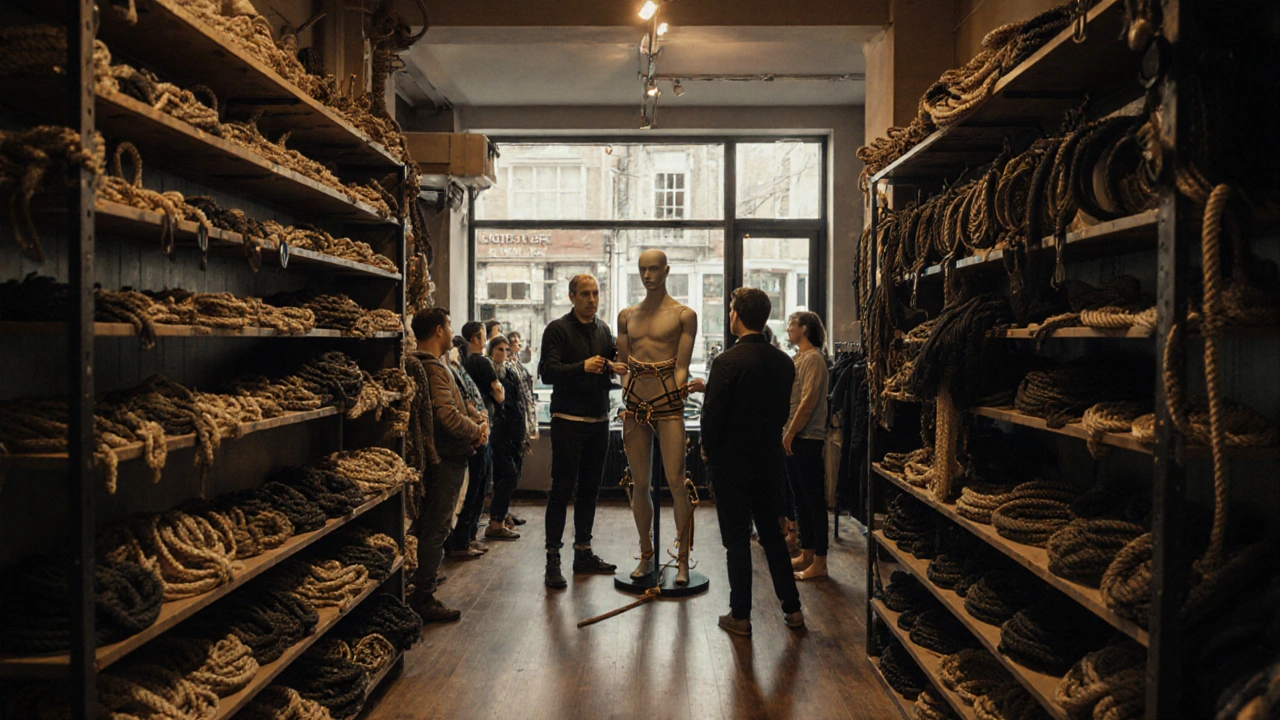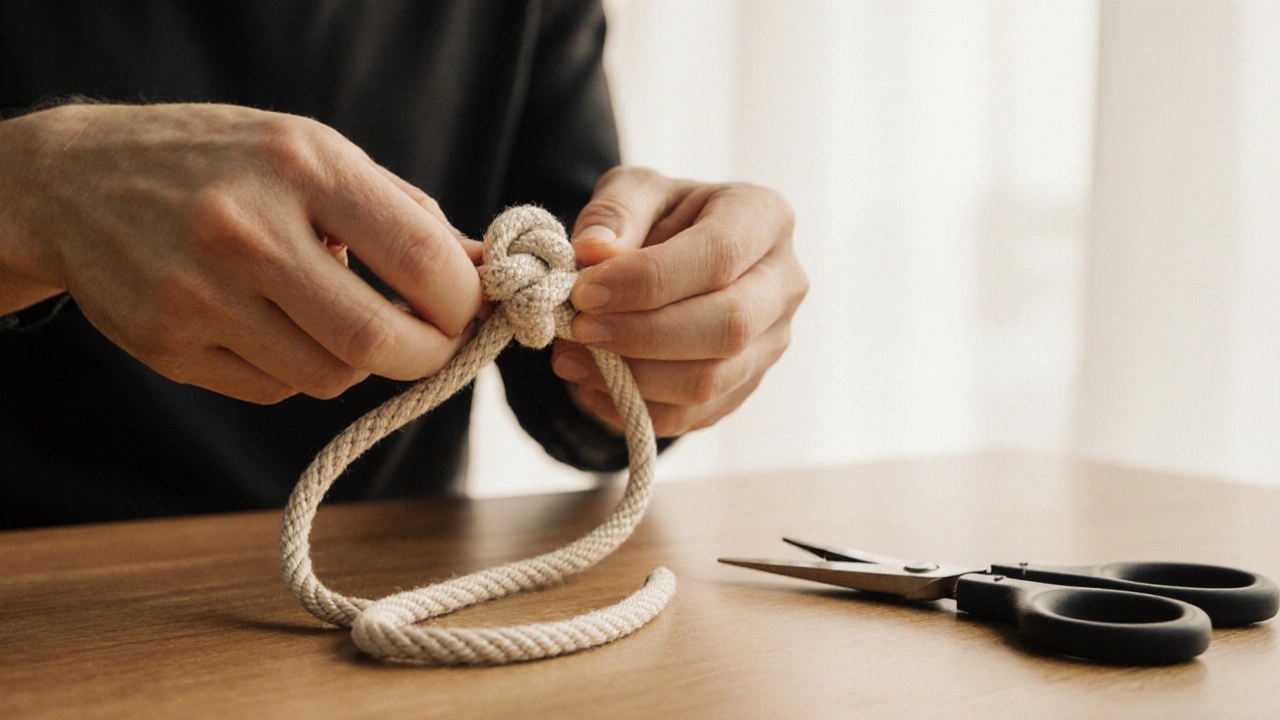Quick Summary
- Bondage is a consensual practice that uses restraints to heighten pleasure and trust.
- Start with simple tools like rope or handcuffs and always keep safety scissors handy.
- Clear communication and written consent are the foundation of any session.
- Aftercare, such as cuddling and hydration, helps both partners recover emotionally.
- Local classes and reputable online shops make it easy to find quality gear.
Comprehensive Guide to Bondage
Ever wondered why a simple piece of rope can feel so intense? That’s the magic of bondage. It isn’t just about tying knots; it’s about building trust, exploring boundaries, and creating a shared rhythm between partners. Whether you’re curious about a weekend weekend experiment or want to dive deeper into the art, this guide walks you through everything a beginner needs to know.
Definition and Context
Bondage is a practice within the broader BDSM community that involves restraining a partner using ropes, cuffs, or other devices to enhance sensation, power exchange, and intimacy. It traces its roots to ancient rituals and theater, but modern bondage evolved alongside the BDSM movement of the 20th century. Today, it’s celebrated as a consensual, creative form of expression that can be as light‑hearted as a playful tie‑up or as intricate as traditional Japanese Shibari (a decorative rope art style).
Benefits of Exploring Bondage
When done responsibly, bondage offers several tangible benefits:
- Enhanced Trust: Relying on each other for safety deepens emotional connection.
- Heightened Sensation: Restriction can intensify skin sensitivity, making touch feel more electric.
- Creative Outlet: Designing knots and patterns lets you explore aesthetics alongside eroticism.
- Stress Relief: The focus required to tie and the release after a session can act like meditation.
For example, a couple in Camden reported that a simple “bow tie” session helped them talk openly about desires they’d never mentioned before, leading to a healthier overall relationship.

Types of Bondage You Can Try
Not all restraints feel the same. Here are the most common entry points for newcomers:
- Rope natural or synthetic fibers used for a variety of knots and patterns, offering both aesthetic appeal and functional restraint. Choose 6‑8mm cotton for comfort or 4‑mm jute for a firmer grip.
- Handcuffs metal or padded restraints that lock quickly but should be used with caution to avoid circulation issues. Opt for padded “soft” cuffs when starting out.
- Safety Scissors small, blunt‑tip scissors designed to cut rope or fabric quickly without harming skin. Keep a pair within arm’s reach on every session.
- Consent Form a written agreement outlining limits, safe words, and aftercare preferences, often used in organized play parties. Even a quick note can clarify expectations.
- Aftercare the post‑session routine that includes cuddling, hydration, and emotional check‑ins to ensure both partners feel safe and cared for. A few minutes of gentle touch can make a world of difference.
How to Find Quality Bondage Gear in London
London offers a wealth of stores and online shops catering to BDSM enthusiasts:
- Brick‑and‑mortar: London Fetish Boutique in Soho, Bondage & Whips in Brixton, and the downtown Playful Kink market stall.
- Online: FetishFactory.co.uk ships same‑day within the city, while BondageSupplies.com offers a starter kit with rope, cuffs, and safety scissors for £49.
- Workshops: Look for weekly “Rope Basics” classes at the Kink Community Centre (Camden) or the Sexual Wellness Hub (Clapham). Many classes include a free after‑class practice session.
When buying, prioritize items that list “easy‑release” knots and non‑abrasive materials. Check user reviews for durability; a synthetic nylon rope that slides too easily can be frustrating.
What to Expect During a First Bondage Session
A typical beginner session lasts 60‑90minutes and follows a predictable flow:
- Pre‑play discussion: Talk limits, safe word (e.g., “red”) and a “check‑in” phrase (e.g., “yellow”).
- Gear check: Verify that rope, cuffs, and safety scissors are clean and within reach.
- Warm‑up: Light massage or teasing to build arousal before restraints.
- Tying: Start with a simple wrist tie or a “single column” leg tie. The dominant (the one tying) explains each step as they go.
- Play: Once restrained, explore teasing, light spanking, or sensory play.
- Release & aftercare: Use safety scissors to free knots, then move into cuddling, hydrate, and discuss feelings.
The key is pacing. If either partner feels discomfort, the safe word instantly pauses the scene.
Pricing and Booking for Private Sessions or Classes
Professional rope‑play instructors in London generally charge £80‑£120 per hour for private one‑on‑one sessions. Group workshops (3‑5 participants) run for £40‑£60 per person. Many studios offer a “first‑timer discount” of 10% if you book online.
Booking is straightforward: most venues have an online calendar, a 24‑hour cancellation policy, and a brief intake form that double‑checks consent and medical restrictions.

Essential Safety Tips for Beginners
- Never tie without a safety plan. Always have Safety Scissors within arm’s reach.
- Check circulation every 5‑10 minutes-look for numbness, tingling, or discoloration.
- Start with loose knots; you can tighten gradually based on feedback.
- Never use improvised restraints like zip ties or rope with metal ends unless you’re experienced.
- Establish a clear safe word and respect it immediately.
- Document limits in a written Consent Form before each session.
Remember, the goal is pleasure, not pain. If something feels wrong, stop and reassess.
Comparison Table: Bondage vs. Impact Play in London
| Aspect | Bondage | Impact Play |
|---|---|---|
| Primary Focus | Restraint and sensation through limitation | Physical stimulation via spanking, flogging, or caning |
| Typical Equipment | Rope, cuffs, scarves, safety scissors | Pads, floggers, paddles, crops |
| Risk Profile | Circulation, nerve compression | Bruising, skin abrasions |
| Learning Curve | High for intricate knots | Moderate - technique focused |
| Common Settings | Private rooms, rope workshops | Dungeons, clubs with impact gear |
Frequently Asked Questions
Is bondage safe for beginners?
Yes, as long as you follow basic safety rules: use soft rope, keep safety scissors handy, check circulation, and communicate clearly with your partner.
Do I need a lot of equipment to start?
No. A simple pair of padded cuffs, a 10‑meter length of cotton rope, and safety scissors are enough for a first session.
How do I choose the right rope?
For beginners, 6‑8mm cotton offers comfort and easy handling. If you’re interested in aesthetics, try jute or hemp, but practice on a dummy first.
What if I feel a “pinch” or numbness?
Immediately loosen or cut the tie. Numbness is a sign of restricted blood flow - stop the scene, release the restraint, and assess the area.
Is aftercare necessary for everyone?
Aftercare is recommended after any intense scene. Even a brief cuddle and water can help both partners transition back to everyday life.
Next Steps
If you’re ready to try your first tie, start by buying a short length of cotton rope and a pair of safety scissors. Schedule a beginner’s workshop at the Kink Community Centre, and practice simple wrist ties at home before moving on to more complex patterns. Remember, the best sessions are built on communication, consent, and care - happy tying!









Ankit Chamaria
October 11, 2025 AT 22:59So you’ve decided to dip your toes into the world of rope, huh? Good on you for reading the guide first, because nothing says ‘safety first’ like a sarcastic warning from a total newbie. Start with a single‑column wrist tie – it’s both simple and forgiving, which is perfect when you’re still figuring out which end of the rope is the ‘good’ one. Keep those safety scissors within arm’s reach; you’ll thank yourself when the knot gets a little too tight and you need a quick release. Remember, the whole point is to have fun, not to audition for a medieval executioner role.
Travis Reeser
October 24, 2025 AT 09:39Happy to echo that the wrist tie is a solid starter. It lets both partners stay comfortable while you get a feel for tension and placement. Make sure to communicate the check‑in phrase before you begin – it helps keep the mood relaxed. If you notice any tingling, loosen the rope right away; circulation is more important than the knot’s aesthetic. Taking these steps will make your first session feel safe and enjoyable.
mahendra kushwaha
November 5, 2025 AT 19:19Esteemed readers, permit me to elaborate upon the cultural significance of bondage within historical contexts. The art of Shibari, for instance, originated as a form of performance art in Edo‑period Japan, embodying both aesthetic refinement and disciplined technique. Modern practitioners should pay homage to this lineage by studying traditional knots before attempting avant‑garde variations. Moreover, acquiring equipment from reputable merchants ensures material integrity and longevity, thereby upholding the virtues of safety and respect. I trust this exposition augments your scholarly appreciation.
Marie Elizabeth
November 18, 2025 AT 05:59Thank you for that insightful historical note 😊. It’s wonderful to see the emphasis on respect and proper tools – those are key pillars for any healthy scene. I also love how you highlighted the importance of aftercare; a warm cuddle and a glass of water can make all the difference after an intense session. Let’s all remember to check circulation every few minutes – a quick squeeze can prevent serious issues. Keep sharing knowledge and kindness! 🌟
Kristen O.
November 30, 2025 AT 16:39From a risk‑mitigation perspective, the implementation of redundant safety mechanisms, such as dual‑blade blunt scissors and pre‑session vascular assessment protocols, yields a statistically significant reduction in iatrogenic complications. Incorporating a calibrated tension gauge can further standardize load distribution across ligature points, thereby optimizing mechanotransductive feedback loops. Additionally, leveraging polymeric fiber composites with low friction coefficients enhances user ergonomics while preserving tensile strength. These evidence‑based practices align with contemporary BDSM safety frameworks and should be integrated into beginner curricula.